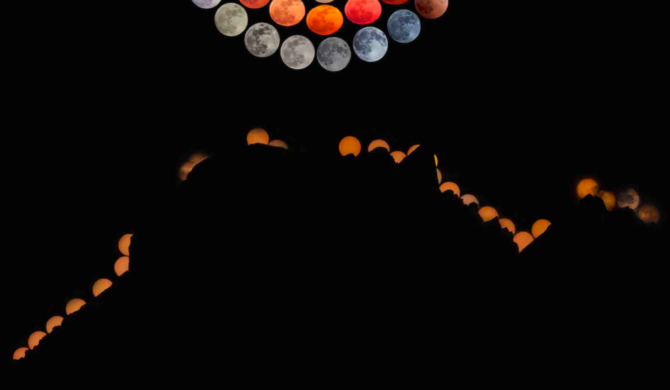
30
2020“Ad un Pelmo dal Cielo” mostra dal 3-13 Luglio 2021 San Vito di Cadore (Bl)
Grazie per visitare la mia mostra fotografica e il mio sito.
Spero che vi stiano piacendo le mie foto.
Thank you for visiting my exhibition and my website.
I hope you enjoy viewing my pictures.
FOTO IN ESPOSIZIONE
GreenFlash
Ho seguito il Green Flash per molti anni e, sebbene fossi riuscita a osservarne molti sul Sole e alcuni sulla Luna, il 24 maggio sono riuscita a riprendere il Raggio Verde sulla falce di Venere e su Mercurio.
Questa immagine è stata pubblicata dalla NASA come APOD (Astronomy Pictures of the Day)
Per i dettagli sul fenomeno Green Flash, rimando al grande lavoro di ricerca sul fenomeno condotto da Andrew T. Young che mette a disposizione sul sito: https://aty.sdsu.edu
I have been following the Green Flash for many years and, although I had managed to observe several of them on the Sun and some on the Moon, on 24 May I managed to resume the Green Ray on the Venus scythe and on Mercury.
For details on the Green Flash phenomenon, I refer to the great research work on the phenomenon carried out by Andrew T. Young which makes available on the site: https://aty.sdsu.edu
This image was published by NASA as APOD (Astronomy Pictures of the Day)
Sun
Day: 2019/3/18
Camera: Canon sx 60 HS
247mm; 1/1000 sec.; f/8; ISO 100
Location: Marina di Ragusa
Moon:
Data: 2020/5/8
Camera: Nikon Coolpix P1000; 359mm; 2,5 sec; f/8; ISO100
Elaboration (PS): Dario Giannobile
Location: Modica Countryside /Ragusa (Sicily) (500 mt about s.l.)
Venus:
Data: 2020/5/24
Camera: Nikon Coolpix P1000; 539mm; 1,3 sec; f/8; ISO100
Location: Modica Countryside /Ragusa (Sicily) (500 mt about s.l.)
Mercury:
Data: 2020/5/24
Camera: Nikon Coolpix P1000; 539mm; 1,3 sec; f/8; ISO100
Location: Modica Countryside /Ragusa (Sicily) (500 mt about s.l.)
- Costellazione di Orione sul Pelmo
Orione e il Pelmo
Sirio e le stelle di Orione, incastonate tra le creste di Costantiol e il monte Pelmo, abbagliano più del solito grazie all’azione dell’atmosfera, con il suo aerosol fatto di particelle, gocce d’acqua, polline, filtra e diffrange la luce degli astri, generando il fenomeno denominato “corona”.
Le corone più frequenti sono quelle generate dalla Luna e dal Sole ma tutti i corpi celesti luminosi, anche i pianeti e le stelle, seppur puntiformi, possono dare origine a questo ovattato effetto con fasce circolari di luminosità quasi da artista puntinista. Un effetto simile può anche ottenersi appannando leggermente la lente dell’obiettivo ma si appannerebbe anche il paesaggio intorno, che in questo caso è nitido proprio perché sono gli strati lontani e profondi dell’atmosfera a creare l’effetto e il suo senso di sospensione.
Sirius and the stars of Orione and,set between the ridges of Costantiol and Mount Pelmo, dazzle more than usual thanks to the atmosphere, with its aerosol made of particles, drops of water, pollen, filters and diffracts the light of the stars, generating the announced phenomenon “crown”.
The most frequent crowns are those generated by the Moon and the Sun but all the luminous celestial bodies, even the planets and stars, albeit punctiform, can come from a muffled effect with circular bands of brightness almost like a pointillist artist. A similar aspect can also be generated by the steamy lens , but in this case the mountain it is clear precisely because they are the distant and deep layers of the atmosphere.
CAMERA: Nikon D7100
Obiettivo: Nikkor 18-140mm f3.5
Astroinseguitore Star Adventurer
DATE: for sky: 30mm; 183 sec; f 4; ISO 400;
for the landscape I turned off the star tracker:183mm; 30 sec; f 4; ISO 400
Location:San Vito di Cadore (Italy)
Data: 16/2/18
- Sole sull’Etna
Il Sole e l’Etna
Il tempo, inteso sia come meteo e sia come quello che si presenta raramente tra un impegno di lavoro e doveri quotidiani, mi ha permesso di realizzare lo scatto gemello della foto che la Nasa scelse come “Astronomy Picture of the day” il 4 settembre 2018: La Luna che tramonta sul cratere dell’Etna (Vedi copertina calendario NO 2019). https://apod.nasa.gov/apod/ap180904.html
Il 18 febbraio avevo individuato una postazione in un campo di Giardini Naxos da dove avrei potuto attendere il Sole tramontare ad una quota di circa 3000 mt, sul cratere sommitale.
Per riprendere il disco solare tramontare attraversare linea dell’orizzonte marino,non si ha bisogno di filtro, al filtro ci pensa la densa atmosfera ma, per riprendere il Sole inzupparsi dentro il cratere vulcanico più alto d’Europa è necessario il filtro Astrosolare sempre che, lievi strati di nubi filtrano ugualmente il disco solare.
Il Sole che in questo periodo sta attraversando il minimo solare di attività, non presenta alcuna macchia, attivo invece era il cratere del vulcano, i cui sbuffi, si distinguono bene dentro disco solare.
La foto è la somma di due scatti dalla stessa posizione senza cambiare inquadratura: uno per il Sole con un filtro solare e uno senza filtro appena il Sole si è portato la motagna.
Il video mostra anche come la rifrazione deforma il bordo del disco solare. Sembra che il Sole stia bruciando con il fuoco che si alzava dal centro della Terra.
Il video è stato ripreso, per le inquadrature zommate, con una Nikon Coolpix P1000 equipaggiata con un filtro astrosolare e con una Nikon D7100, una sequenza di 720 foto: f / 20; 1 / 350sec; Intervalli ISO 100 e 1 secondo; senza filtro.
La macchina utilizzata era una Canon SX 60Hs.
Con il sole: 247 mm; 1/6; f / 8; ISO 100 e Astrosolar.
Nessun filtro: 247mm; 1/2000 sec f / 8; ISO 100
- La Luna e l’Etna
La Luna e l’Etna
L’Immagine riprende il parossismo dell’Etna del 26 Agosto 2018 durante il tramonto della Luna.
Descrizione: L’Immagine riprende il parossismo dell’Etna del 26 Agosto 2018 durante il tramonto della Luna.
Calcolai e poi attesi il giorno dell’allineamento della Luna piena con l’Etna in fase eruttiva. Per realizzare una foto di questo tipo è necessario che si verifichino contemporaneamente alcune condizioni:
– che l’Etna sia in attività eruttiva
– che nel momento del parossismo sia visibile la Luna
– che si sia ben calcolata la possibilità di riprendere la Luna tramontare o sorgere dal cratere in attività.
– che non vi sia cielo coperto
– che l’attività non produca nubi ardenti o nubi di cenere stazionanti in prossimità del cratere.
E per essere del tutto certi della compresenza di queste condizioni, non si può far altro che presentarsi sul posto stabilito, all’ora stabilita. Il mio posto prescelto era sul ciglio di un sentiero nella zona del rifugio Citelli e l’ora del mio appuntamento era fissato alle 4.30 del mattino.
La mia previsione circa la postazione ottimale ha incontrato l’imprevisto dell’altezza degli alberi presenti sul punto di ripresa stabilito, che ostruivano buona parte della visibilità. Mi son dovuta così spostare di almeno un km per raggiungere l’altra mia postazione di “emergenza” studiata come “piano B” nel caso in cui la postazione prescelta si fosse rivelata inadeguata.
Realizzai così lo scatto desiderato, in doppia esposizione, riuscendo anche a documentare l’effetto “liquefazione” della Luna per via del ciclo di inversione termica dato dalla lava incandescente. Sul bordo lunare è presente il “Blue Rim”, fenomeno simile a quello che si manifesta all’alba e al tramonto sul disco del Sole o della Luna e denominato “Green Flash” o “Raggio Verde”.
Questa immagine è stata selezionata dalla NASA come Apod (Astronomy Pictures Of the Day)
The image takes up the paroxysm of Etna on August 26, 2018 during the Sunset of the Moon.
I made some calculation about the exact position and then waited for the day of the alignment of the full moon with Etna in its eruptive phase.
To make this kind of photo, some conditions must simultaneously occur:
- he Etna, obviously, must be in eruptive activity, and this is unpredictable, if not on a very short term;
- the Moon must be visible in the moment of the paroxysm;
- the position of the moon at setting or rising, from the active crater, must have been correctely calculated;
- there must be no overcast sky
- the vulcanic activity must not produce burning clouds or ash clouds, stationing near the crater.
This image was selected by NASA as an Apod (Astronomy Pictures Of the Day).
Dati di scatto: Camera Canon SX 60HS
247mm; 1/10 sec; f/6,5; ISO 100 (scatto Luna)
247mm; 15sec.; f/6,5; ISO100 (scatto per fontana di lapilli)
Luogo: Etna
Data: 26/8/18
- Rifrazione al tramonto
Rifrazione al tramonto
La foto, che riprende il faro di Punta secca (Rg) al tramonto, è stata scattata a una distanza di 18,50 Km (Cava d’Aliga – Ragusa e per questo motivo il disco del Sole appare molto grande rispetto al paesaggio.
Il disco solare perde il suo aspetto circolare e si deforma (anche il faro sembra deformato) a causa della rifrazione.
Appena il Sole è passato sotto l’orizzonte, la luce del Faro è apparsa… come se il Sole avesse erogato parte della sua luce.
The photos were taken at a distance of 18.50 Km (Cava d’Aliga – Ragusa https://goo.gl/maps/vutH2SRVbHcXs1d38 ) and for this reason the disk of the Sun appears very large compared to the landscape.
You notice the Sun deforming (even the lighthouse seems deformed) due to the refraction.
As soon as the solar disk went below the horizon, the light of the Lighthouse appeared…as if the sun had delivered some of its light.
Day: 10 May 2019
Camera: Nikon Coolpix P1000
- Man & Moon
Man and Moon
These images were taken on 28/5/18 at 3:46 from Italy. These are individual shots.
Camera: Canon SX 60Hs
247mm; 1/13 sec.; f 6,5; ISO 100.
My position: https://goo.gl/maps/z53o3M25QEz
Silhouette position:https://goo.gl/maps/oKGESnJKrd72
PRIMA SALA A DESTRA
La Via Lattea tra Marte e Giove
Marte sorge mentre Giove tramonta. Il 15 luglio alle 23.50, sono riuscita a catturarli equidistanti dalla Via Lattea e sulla stessa linea perpendicolare ad essa.
Il luogo delle riprese è un sito archeologico chiamato Kaucana (Καυκάνα in greco antico), un’antica città portuale. Si possono notare le antiche mura in primo piano. Sullo sfondo, all’orizzonte, si scorgono le luci dell’arcipelago maltese osto a circa 90 km da Kaucana.
Luogo: Kaucana – Ragusa (Sicilia -Italia)
Mars rises as Jupiter sets. Yesterday, the 15th of July at 11.50 pm, I was able to catch them: they were equidistant from the Via Lattea and on the same perpendicular line to it.
The place of shooting is an archaeological site called Kaucana (Καυκάνα in ancient Greek), an ancient port town when Sicily was a Greek colony and you can notice the ancient walls in the foreground. In the background, at the horizon, you can see the lights of the Maltese archipelago.
Location: Kaucana – Ragusa (Sicily -Italy )For sky:
Camera Nikon D7100 – Tokina 11-16mm
11mm; 239 sec; f/2,8 ISO 100
For land:
Camera Nikon D7100 – Tokina 11-16mm
11mm;30 sec. F/2,8 ISO 100
Day: 14 July 2018
Location: Kaucana – Ragusa (Sicily -Italy ) https://goo.gl/maps/EgChNSfxKHG2
- SE
SE
La traccia delle stelle verso SUD/EST durante la notte attorno al Solstizio racconta la rotazione della Terra, l’inclinazione dell’asse terrestre, l’equatore celeste.
La traccia delle stelle vicino all’orizzonte è più rossa a causa della dispersione.
Se ci concentriamo sulla parte iniziale di ogni traccia, possiamo anche trovare le costellazioni: Scorpione, Sagittario, Capricorno …
In queste tracce di stelle troviamo anche i pianeti: Giove Saturno e Marte
Si noti inoltre che siamo nell’emisfero settentrionale, in Italia e precisamente in Sicilia. Come sfondo, un campo della campagna di Modica in Sicilia. Anche la campagna ha qualcosa da dire. Racconta una stagione che sta finendo, la primavera e una stagione che sta iniziando: l’estate. Il fieno è stato raccolto e compattato in questi rotoli, cosa che accade in questo periodo dell’anno.
Guardando questa foto e senza dare alcuna indicazione del luogo e del tempo, un occhio attento potrebbe forse trovare tutte le indicazioni, anche generiche, di dove siamo e quando: emisfero nord e inizio estate o tarda primavera.
27/28 maggio 2020; Modica countryside – Siciliy (
A startrails heading SOUTH/EAST during the night around the Solstice tells the Earth’s rotation, the inclination of the Earth’s axis, the celestial equator.
The trace of the stars placed near the horizon are redder due to the scattering.
If we focus on the initial part of each track, we can also finder to the constellations: Scorpio, Sagittarius, Capricorn …
In these traces of stars, we also find the planets: Jupiter Saturn and Mars
It is also noted that we are in the northern hemisphere, in Italy, and precisely in Sicily. As a background, a field of the Modica countryside in Sicily. Even the countryside has something to tell. It tells of a season that is ending, spring, and a season that is starting: summer. The hay was collected and compacted in these rolls which happens this time of year.
Looking at this photo and without giving any indication of place and time, a careful eye could perhaps find all the indications, even generic, of where we are and when: northern hemisphere and early summer or late spring (depends on whether he are optimistic or pessimist)
Day: 27/28 May 2020
Location: Modica countryside – Siciliy (Ita)
Camera: Niokon D7100; about 300 shot (the session lasted about four hours). 11mm; 25 sec; f/2.8; 200 ISO
- Isnello
ISNELLO
Isnello (Palermo – Italia), un piccolo paese di montagna nei Monti delle Madonie, vanta uno dei cieli più bui e puliti d’Italia. Vicino al centro abitato si trova il Parco Astronomico “Gal Hassin”.
Un giorno ero lì per visitare il parco, per assistere ad alcuni dei numerosi spettacoli astronomici. Alla fine della giornata, si è tenuto un concerto presso la Chiesa SS. Annunziata, in memoria dell’astrofisico e ricercatore Giovanni Bignami, deceduto il 24 maggio 2017. I musicisti hanno suonato parte della sua musica preferita ed io, per tutto il tempo del concerto, ho fotografato questa scia delle stelle circumpolari.
Isnello (Palermo – Italy), a small mountain village in the Madonie Mountains,
boasts one of the darkest and cleanest skies in Italy. Close to the village is the “Gal Hassin” Astronomical Park.
One day I was there to visit the park, attending some of the many astronomic shows that took place in the village. At the end of the day, a concert was held at the Church SS. Annunziata, in memory of the astrophysicist and researcher Giovanni Bignami, who died on the 24th of May 2017. The musicians played some of his favorite music, and as they were playing, I shot this trail of the circumpolar stars.
http://www.comune.isnello.pa.it/isnello/zf/index.php/storia-comune
Il riflesso di Venere sul Laghetto di Limedes (Bl)
Venere riflessa sul lago di Limedes (Cortina D’Ampezzo, Bl).
Venus reflects on Limedes Lake (Cortina d’Ampezzo)
- L’Etna e la Cometa
L’Etna e la Cometa
Durante il crepuscolo mattutino, è possibile vedere il vulcano Etna da Ragusa. Ragusa dista circa 100 km dall’Etna e non è sempre possibile osservarla. Durante le fredde giornate invernali, l’aria limpida mostra frequentemente l’Etna. In estate solo all’alba. Ho aspettato che la cometa si avvicinasse al vulcano. Il 17 luglio mattina all’alba riuscii a raccogliere la debole cometa.
Ho trovato un luogo in cui il vulcano è allineato con il Monte Raci (620 m). Monte Raci, con la sua caratteristica forma arrotondata, rappresenta molto, orograficamente, il territorio ragusano. Sotto la cometa,si vede la montagna più alta degli altopiani hyblaean: Monte Lauro (987mt).
Il Monte Lauro, nell’era del Miocene, era un vulcano sottomarino. Oggi non è più attivo.
During the morning twilight, it is possible to see the Etna volcano from Ragusa. Ragusa is about 100 km from Etna and it is not always easy to observe it. During the cold Winter days, the clear air allows the Etna to be shown more frequently. In Summer the Etna is visible only at dawn. For this picture I waited for the comet to approach the volcano. On July 17, at dawn, I managed to pick up the faint comet.
I found a location where the volcano was aligned with Mount Raci (620 m) and its characteristic rounded shape, very typical of the Hyblaean Highlands. Under the comet, the highest mountain of the Hyblaean Highlands, Mount Lauro (987mt).
Monte Lauro, in the Miocene Epoch, was an underwater volcano and today is no longer active.
My location: https://goo.gl/maps/TakjMBPXCa4iDfo86
Day: 17/7/2020
Camera: Nikon D750; 120mm; 5 sec.; f/6.3; ISO800
SECONDA SALA A DESTRA
La Luna storta
La Luna storta (Venas di Cadore – Bl )
Ho cercato un giorno in cui la luna fosse sorta camuffando quindi la sua reale forma. La notte del 28/1/16 vidi effettivamente sorgere la Luna con una forma insolita, quasi non si riconosceva e sembrava un corpo nuovo che gravitava intorno alla Terra. Solo appena si mostrò completa sopra la montagna persi la fantasia di aver immaginato un nuovo satellite naturale terrestre.
The crooked Moon (Venas di Cadore – Bl)
So I tried to find a day when the moonrise would happen in an unusual manner, almost disguising its real shape. And it was on the night of 28.1.2016 that I actually saw the moon rising from a distant wood with an unusual shape that I almost didn’t recognize. It seemed to me like a completely new celestial object revolving around the Earth. It was only after it showed up completely upon the mountain that I woke up from the fantasy of having seen the rising of an odd new Earth’s natural satellite.
Corna dell’Antelao
Vivendo a San Vito ho avuto modo di notare queste rocce che, nella mia fantasia, han richiamato la leggenda del “Bus del Diavolo”.
La leggenda vuole che il buco, visibile soprattutto da Borca sull’Antelao, si sia creato quando il diavolo fu scaraventato sulla terra trafiggendo così la montagna e lasciando questa cavità.
Nel mio immaginario queste rocce rappresentano le corna staccatesi dalla testa del diavolo nel momento dell’impatto.
Effettivamente la loro forma le ricorda.
Puoi osservare questa particolare formazione sul fianco dell’Antelao, osservandola dalla finestra a sinistra di questa foto.
Ho successivamente avuto modo di notare come questa formazione sia molto simile ad un affioramento sulla spiaggia di Rialto dell’Olimpic National Park (USA)
https://www.alamy.it/rialto-beach-olympic-costa-nello-stato-di-washington-usa-image186037381.html
Una notte ho atteso la Luna che sorgesse alle spalle delle Corna dell’Antelao
- Luna Cinerea sul Pelmo
Luna Cinerea sul Pelmo (Peaio, Bl).
La luce Cinerea è data dal riflesso della luce del Sole sulla Terra che illumina la superficie in ombra della Luna. La falce della Luna è invece illuminata in maniera diretta dal Sole. Quando la Luna è in questa fase, la terra è quasi “PIENA”. Pertanto, i raggi del Sole rimbalzano sulla Terra mostrando, ad un osservatore terrestre, il suolo lunare anche se in ombra.
L’intensità della luce cinerea varia in base alla porzione di Terra illuminata dal Sole.
Luna Cinerea above the Pelmo (Peaio, Bl).
The Cinerea light is the reflection of the light of the Earth on the shadowed Lunar region, when the scythe is illuminated by direct sunlight. When the Moon is in this phase, the earth is almost “FULL”. since from the lunar surface, the face of the Earth turned towards her, it is illuminated by the Sun. Therefore, the sun’s rays bounce off the Earth, showing the lunar soil to a terrestrial observer, even if it is in shadow.
The intensity of the cinereal light varies according to the portion of the Earth illuminated by the Sun.
I Colori Della Luna
La grotta di Punta Ciriga e light painting (Rg)
Corona Lunare e Corona di Giove (Venas di Cadore, Bl)
All’interno della corona di Giove sono appena visibili i satelliti medicei
La corona è un fenomeno ottico atmosferico dato dalla presenza di nubi basse sulle quali la luce del Sole, della Luna o delle Stelle, per diffrazione sulle goccioline d’acqua, genera cerchi di vario colore intorno agli astri.
Lunar Corona Lunare and Jupiter Corona (Venas di Cadore, Bl) Within the Jupiter Corona you can barely see the Galilean moons of Jupiter (Io, Europa, Ganymede, and Callisto).
The corona (crown) is an atmospheric optical phenomenon caused by the water droplets of low clouds over which the diffracted light of the Sun, the Moon and the Stars, creates coloured circles around the stars.
Eclissi di Luna
Passaggio di un aereo durante l’eclissi di Luna.
Visibile anche la corona lunare.
Moon eclipse on 28th September 2015 (Passo Giau, Bl).
n airplan crosses the eclipsed Moon. You can also spot the presence of a Moon corona.
PRIMA SALA A SINISTRA
Nube orografica iridescente su Croda Cuz (Cibiana di Cadore)
Nuvola iridescente su Croda Cuz (Cibiana di Cadore, Bl
Iridescent cloud upon Croda Cuz (Cibiana di Cadore, Bl).
Questa immagine è stata “OPOD” (Optic Pictures of the Day) sul sito inglese https://www.atoptics.co.uk/fza112.htm
Quando le nubi sono sottili e sono composte da goccioline di dimensioni simili, la diffrazione può farle brillare con colori simili a quelli di una corona. Infatti, i colori non sono che frammenti di una corona. L’effetto è chiamato nuvola iridescente.
I colori sono di solito tenui e possono distribuirsi a chiazze quasi casuali o a bande sulle nubi. Formano anelli colorati quando la dimensione delle gocce sono uniformi in tutta la nuvola. Le bande ed i colori cambiano e mutano con l’evoluzione della nuvola. Si verificano più spesso in altocumuli, cirrocumuli e soprattutto sulle nuvole lenticolari. L’iridescenza è vista soprattutto quando una parte di una nube si sta formando.
Didascalia tratta dal sito di Les Cowley http://www.atoptics.co.uk.
Iridescent Clouds
When parts of clouds are thin and have similar size droplets, diffraction can make them shine with colours like a corona. In fact, the colours are essentially corona fragments. The effect is called cloud iridescence or irisation, terms derived from Iris the Greek personification of the rainbow. The usually delicate colours can be in almost random patches or bands at cloud edges. They are only organised into coronal rings when the droplet size is uniform right across the cloud. The bands and colours change or come and go as the cloud evolves. They occur most often in altocumulus, cirrocumulus and especially in lenticular clouds. Iridescence is seen mostly when part of a cloud is forming because then all the droplets have a similar history and consequently have a similar size.
Notes taken from Les Cowley website http://www.atoptics.co.uk.
Nube Iridescente sulla chiesa di Borca (Bl)
Nube iridescente sulla guglia della chiesa di Borca (Borca di Cadore, Bl).
Iridescent cloud above the Borca’s Church steeple (Borca di Cadore, Bl).
Arcobaleno di Riflessione (Longarone, BL)
Ombra del Pelmo sulle nuvole
L’ombra del Pelmo si proietta sulle nuvole (S. Vito di Cadore, Bl).
The shadow of Pelmo is projected on the clouds (S. Vito di Cadore, Bl).
- Raggi Anticrepuscolari ed Enrosadira
Raggi Anticrepuscolari ed Enrosadira
I raggi che convergono dietro una montagna ci fanno credere che il Sole sia dietro di essa, ma la montagna ha un picco illuminato da un Sole frontale. Com’è possibile?
Questi sono due noti effetti ottici atmosferici. Uno di questi effetti inganna la nostra percezione: Raggi Anticrepuscolari
I Raggi Anticrepuscolari appaiono sul lato opposto al tramonto (o all’alba) e sembrano convergere in Oriente creando l’illusione che il Sole sia nel punto in cui convergono.
La cima della montagna è ancora illuminata dal Sole e c’è anche l’effetto “Enrosadira” o “Alpenglow” e alle sue spalle si aprono a ventaglio, i raggi anticrepuscolari.
Giorno: 2016/05/14 alle 17:21
Luogo: Venas di Cadore (Belluno)
Rays that converge behind a mountain make us believe that the sun is behind it, but the mountain has a peak illuminated by a frontal sun. How is this possible?
These are two well-known atmospheric optical effects. One of these effects deceives our perception: Anticrepuscular Rays
The Anticrepuscular Rays appear on the opposite side at sunset (or sunrise) and seem to converge in the East creating the illusion that the Sun is at the point where they converge.
The top of the mountain is still illuminated by the Sun and there is also the “Enrosadira” or “Alpenglow” effect ( typical phenomenon of the Dolomites mountains) and behind it, you can see the Anticrepuscular Rays.
Day: 2016/05/14 at 5:21 pm
Location: Venas di Cadore (Belluno)
Camera: Nikon D7100; 18mm; 1/15 sec.; f/7,1; ISO100
Day: 2016/05/14 at 5:21 pm
Parelio destro sul Pelmo (Peaio, Bl).
Right Sundog above the Pelmo (Peaio, Bl).
SECONDA SALA A SINISTRA
- Alone su Ibla
Alone solare su Ibla
L’Alone solare è un evento molto frequente ma di rado si manifesta in maniera così accesa. Si forma in presenza di nubi troposferiche come i cirri, composti da cristalli di ghiaccio attraversando i quali la luce (del Sole o della Luna), per riflessione e rifrazione, genera un anello luminoso con strati di colori concentrici. Il primo strato, quello più vicino all’astro, è rosso con colorazioni cangianti nei successivi strati, via via sfumando. A differenza di come spesso si ritiene, questa formazione è si verifica a qualsiasi latitudine e in qualsiasi momento dell’anno, essendo un fenomeno che richiede cristalli di ghiaccio a quota tra i 6.000-12.000 metri, dove la temperatura è stabile.
The solar halo is a very frequent event but it rarely shows up in such an evident way.
It occurs in the presence of tropospheric clouds, such as cirrus clouds, made up of ice crystals through which the light (of the Sun or the Moon), by reflection and refraction, creates a bright ring with layers of concentric colors.
The first layer, the one closest to the star, is red with iridescent colors in the subsequent layers, gradually fading. Unlike what is often believed, this solar halo occurs at any latitude and at any time of the year, being a phenomenon that requires just ice crystals at altitudes between 6,000-12,000 meters, an altitude where the temperature is stable.
In Ragusa Ibla lived the astronomer Gian Battista Hodierna (1597-1660) who from this city watched and cataloged many celestial bodies such as comets “and other celestial objects containing some 40 entries, including at least 19 real and verifiable nebulous objects that might be confused with comets.”
https://www.nasa.gov/feature/goddard/2017/messier-8-the-lagoon-nebula
- Le costellazioni catturate dall’ Alone lunare
Costellazioni catturate dall’Alone Lunare
Ho selezionato tutti i miei scatti in cui era presente l’alone lunare per verificare se al suo interno fosse inclusa un’intera costellazione.
Una luna che intrappola intere costellazioni nella sua aureola.
Ho trovato 5 foto in cui la luna ingloba nel suo alone alcune costellazioni realizzando questa unica immagine.
I leafed through all my shots in which the lunar halo was present to check if an entire constellation was included within it. A Moon that traps whole constellations in its halo.I found 5 photos where the moon englobes its constellation circle:
I found 5 photos where the moon englobes its constellation circle:
Cancer (halo and aureola)
Date: 2018/3/26
Camera: Nikon D7100; 20mm; 30 sec; f/3.5; ISO 100 (two shot for panoramic)
Location: Borca di Cadore, Belluno (Italy)
Taurus
Date: 2018/11/23
Camera: Nikon D7100; 18mm; 6 sec; f/3.5; ISO 320 (two shot for panoramic)
Location: Modica countryside (Rg) Italy
Leon and Sextans
Date: 2017/1/14
Camera: Nikon D7100; 18mm; 6 sec; f/3.5; ISO 320 (two shot for panoramic)
Location: Modica countryside (Rg) Italy
Libra (Parry Arc, Upper tangent Arc, Halo 22 degree, Paraselene)
Date: 2020/3/14
Camera: Nikon D7100; 11mm; 13 sec; f/2.8; ISO 100 (two shot for panoramic)
Location: Modica countryside (Rg) Italy
Virgo
Date:2020/5/5
Camera: Nikon D7100; 11mm; 10 sec; f/3.2; ISO 100 (two shot for panoramic)
Location: Modica countryside (Rg) Italy
The constellation of the Virgo is the largest after that of Pisces (exceeds 30 °).
The stylized representations of the constellations are taken from the “Stellarium” software.
- Soligrafia del Monte Pelmo
Soligrafia del monte Pelmo
Questa immagine è la sagoma del Monte Pelmo disegnata dal disco solare al tramonto.
Dal 12 gennaio 2018, ogni giorno, ho atteso che il Sole tramontasse dietro il Monte Pelmo. Usando un filtro astrosolare, ho scattato il momento in cui il Sole ha toccato il bordo della roccia. Ogni giorno il Sole, proprio come un pittore romantico, ha svelato nuovi pezzi del profilo della montagna. Alla fine, ho composto la silhouette come se fosse un puzzle. L’immagine finale è la somma di 15 diversi tramonti (dal 12 gennaio al 21 febbraio).
Gli spazi dove non c’è il sole sono dovuti alla presenza di nuvole. L’11, il 16, il 20 e il 22 febbraio ho potuto inserire più dischi del Tramonto perché l’inclinazione della roccia era corrispondente al percorso del Sole.
In particolare, il 15 febbraio il Sole, come un alpinista, ha seguito l’intero crinale che scende in diagonale. La mia posizione di scatto è sempre stata la stessa per tutto il periodo: il piazzale di Villa Belvedere a San Vito di Cadore
This image is the silhouette of Mount Pelmo designed by the solar disk at sunset.
From January 12, 2018, every day, I was waiting for the Sun to set behind Mount Pelmo. Using an astrosolar filter, I shot the very moment when the Sun touched the edge of the rock. Every day the Sun, just like a romantic painter, has unveiled new pieces of the mountain’s profile. Eventually, I composed the silhouette as if it were a puzzle. The final image is the sum of 15 different Sunsets (from 12 January to 21 February).
The spaces where there’s no Sun are due to the presence of clouds. On 11, 16, 20 and 22 February I was able to insert more pictures of the Sunset because the rock’s inclination was parallel to the Sun’s path.
In particular, on the 15th of February the Sun, like a mountaineer, followed the whole ridge steep mountain. My shooting position was always the same during the whole period.
Enrosadira all’Alba sul Pelmo (Peaio, Bl)
L’Enrosadira è un tipico effetto che avviene sulla roccia delle dolomiti che, al tramonto in direzione est e all’alba in direzione Ovest, assume una colorazione che va dal rosso al viola. La colorazione varia in base alla posizione del Sole durante l’anno e alle condizioni dell’atmosfera.
Alpenglow at sunrise and Pelmo (Peaio, Bl)
Alpenglow is an optical effect that happens when the Sunlight hits the rocks of Dolomites Mountains (Italy) from east at sunset and from west sunrise. The colour shades change during the year and depend on the weather.
Arco Circumzenitale sopra la chiesa di Cibiana di Cadore
L’arco circumzenitale (CZA) è’ spesso descritto come un “arcobaleno a testa in giù” da chi lo vede per la prima volta. Qualcuno, più poeticamente lo ha paragonato a “un sorriso nel cielo”.
La rifrazione dei raggi quasi paralleli attraverso le facce delle piastrine inclinate di 90° produce colori prismatici molto puri e ben separati. I colori dell’arco circumzenitale sono più puri di quelli stessi dell’arcobaleno.
- Alone su Cortina
Sistema alonare su Cortina d’Ampezzo
Questa immagine mostra molti fenomeni atmosferici nelle Dolomiti “Cortina d’Ampezzo”:
Arco tangente superiore
Cerchio Parelico
Alone
parelio
Arco superlaterale.
This image shows many atmospheric phenomena in the Dolomites “Cortina d’Ampezzo”:
Upper tangent Arc
Parhelic Circle
Halo
Parhelion
Superlateral Arc.
Wegener Arc – Upper Tangent Arc – Parhelic Circle – Circumscribed
Fulmine su Hybla
«Bisogna essere intelligenti per venire a Ibla, una certa qualità d’animo, il gusto per i tufi silenziosi e ardenti, i vicoli ciechi, le giravolte inutili, le persiane sigillate su uno sguardo nero che spia.»
(Gesualdo Bufalino)
Ragusa Ibla è un labirinto di viuzze dove si avvicendano case e palazzi barocchi che invariabilmente finiscono con l’affacciarsi in piazze luminose e baciate dal Sole.
E’ la parte antica di Ragusa, che fu totalmente distrutta dal terremoto del 1693. La ricostruzione dotò la città di magnifici monumenti tipici del barocco siciliano.
Ragusa Ibla è stata scelta come set cinematografico per la serie del “Commissario Montalbano” riconosciuta come l’immaginaria Vigata dei romanzi di Camilleri.
Ragusa Ibla is a labyrinth of narrow streets and Baroque old buildings which end up looking out into bright and sun-kissed squares.
It is the ancient part of Ragusa, which was totally destroyed by the 1693 earthquake.
The city was entirely rebuilt with magnificent monuments and houses, typical of the Sicilian Baroque.
Ragusa Ibla was chosen as a film set for the “Commissario Montalbano”, the imaginary “Vigata” of Andrea Camilleri’s novels.
Thank you for visiting my exhibition and my website.
I hope you enjoy viewing my pictures.
Also, please feel free to blog me at the bottom of each page.
I would love to read your comments!
*
Grazie per aver visitato la mia mostra fotografica e il mio sito.
Spero che vi stiano piacendo le mie foto.
Se vi va, potete lasciare un commento alla fine della pagina, sarà un piacere leggere i vostri commenti.
Marcella Giulia

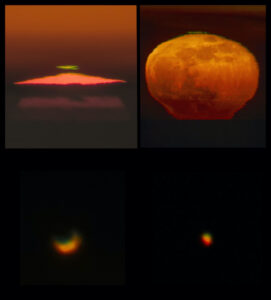
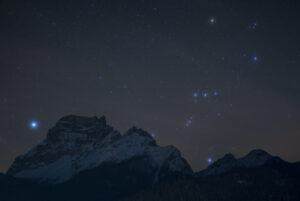
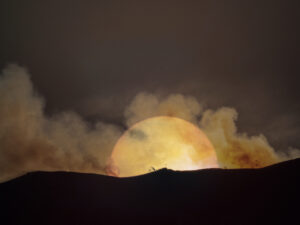
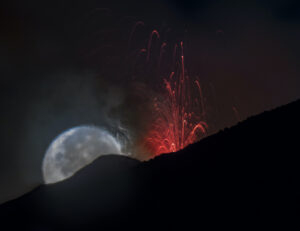

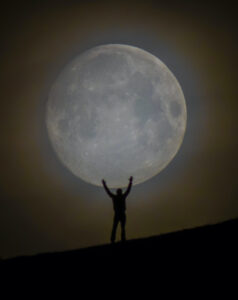
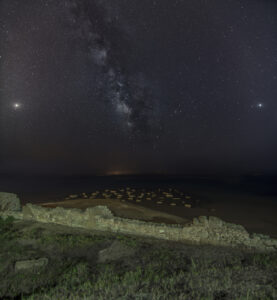

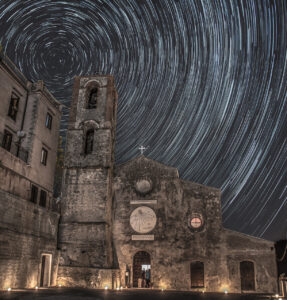
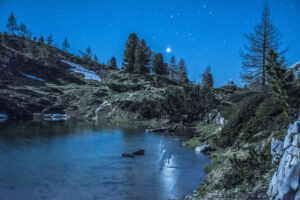
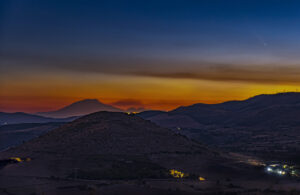
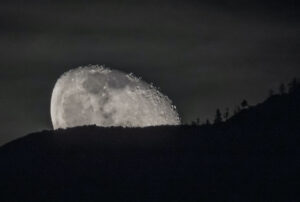
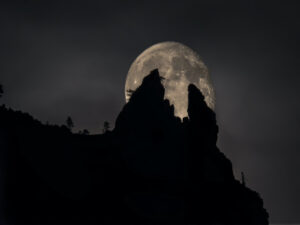
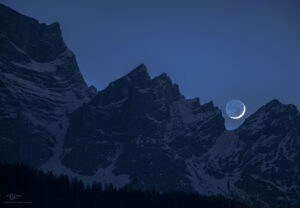
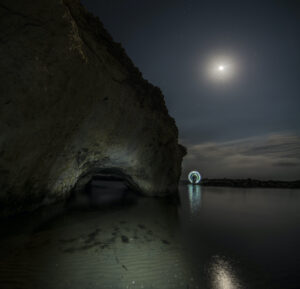
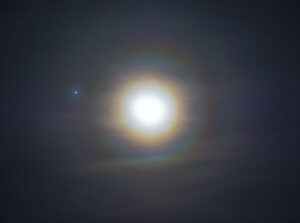
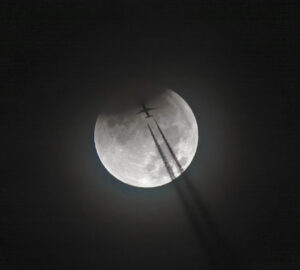
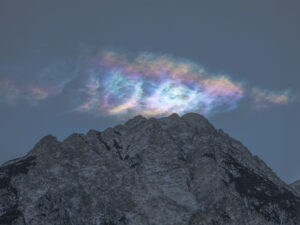
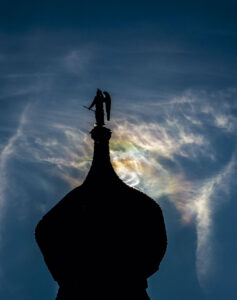



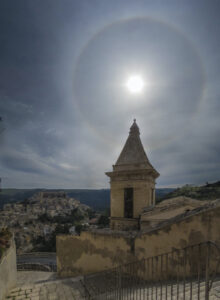
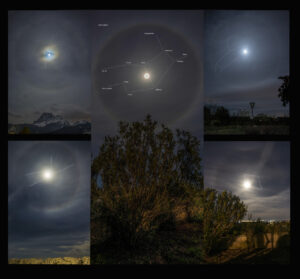
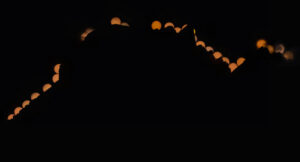
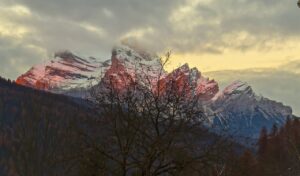
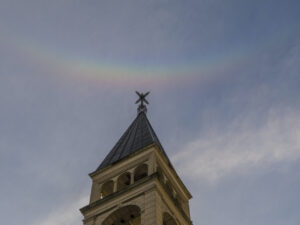
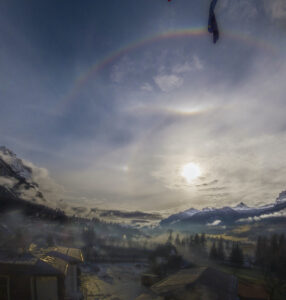
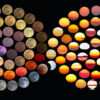
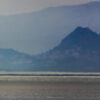
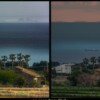
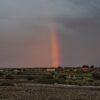
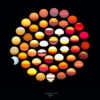
Recent Comments